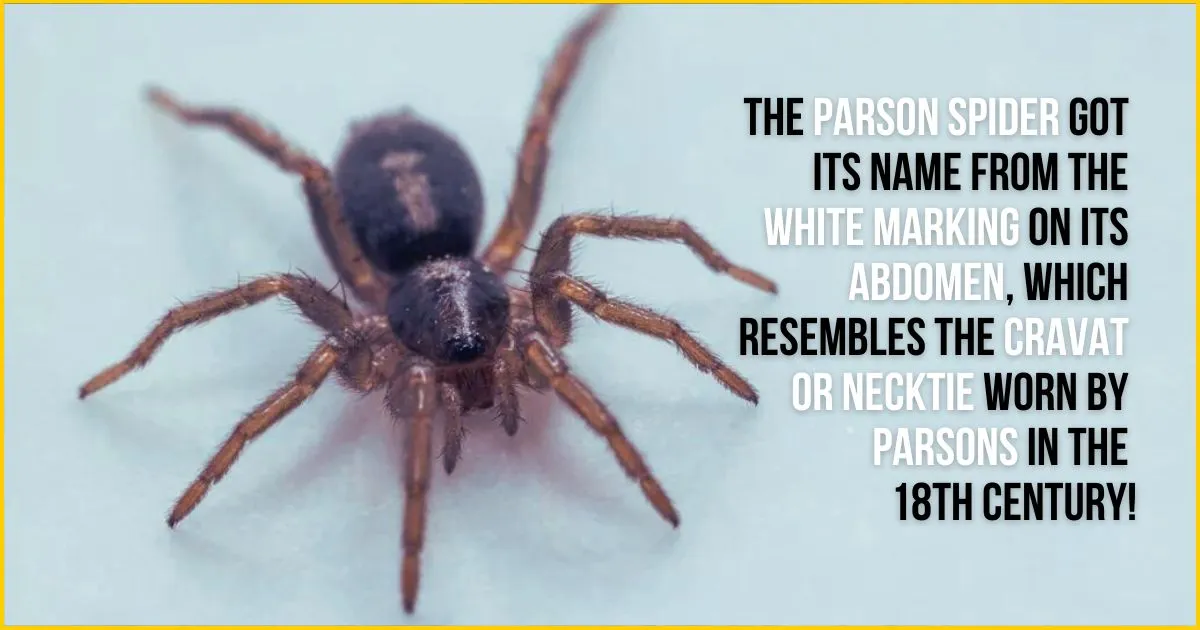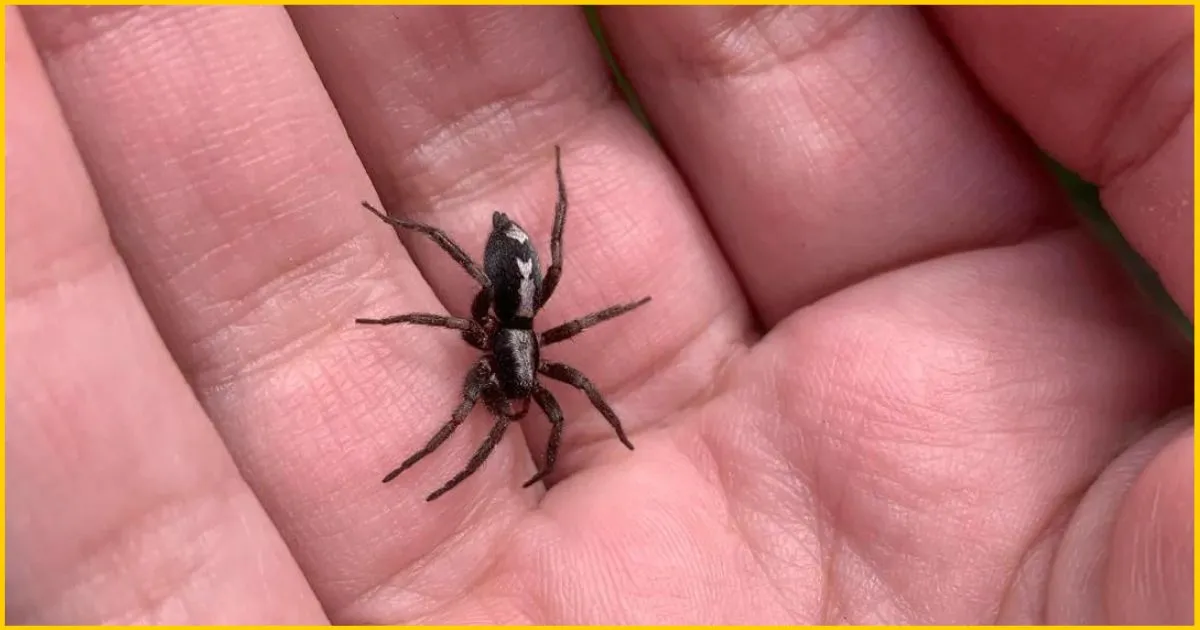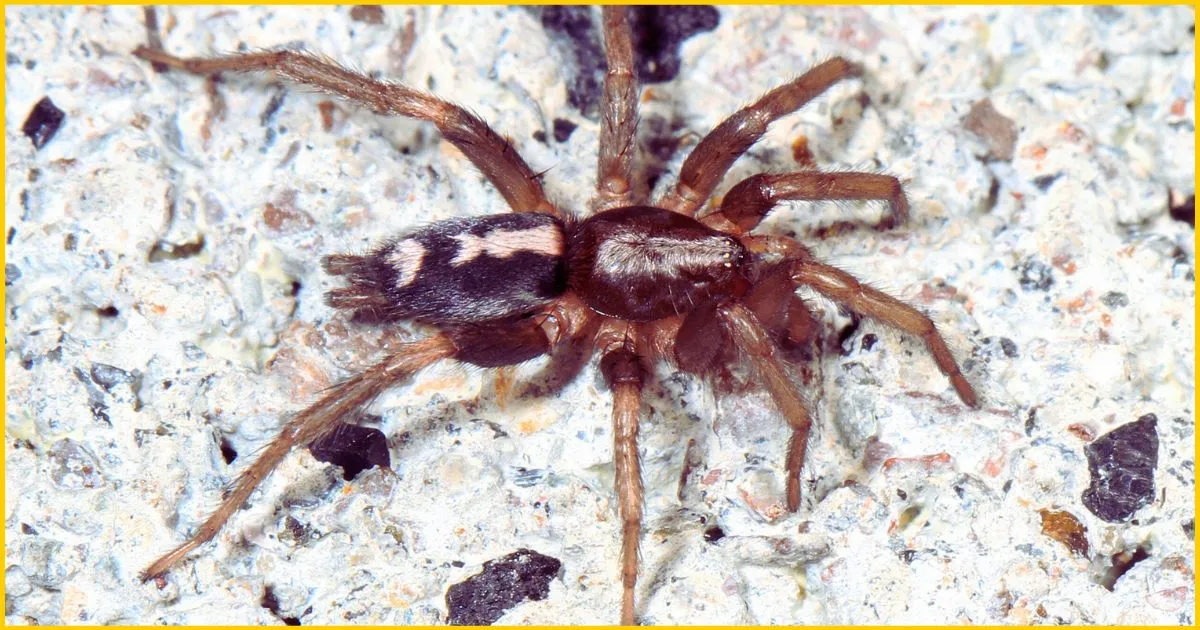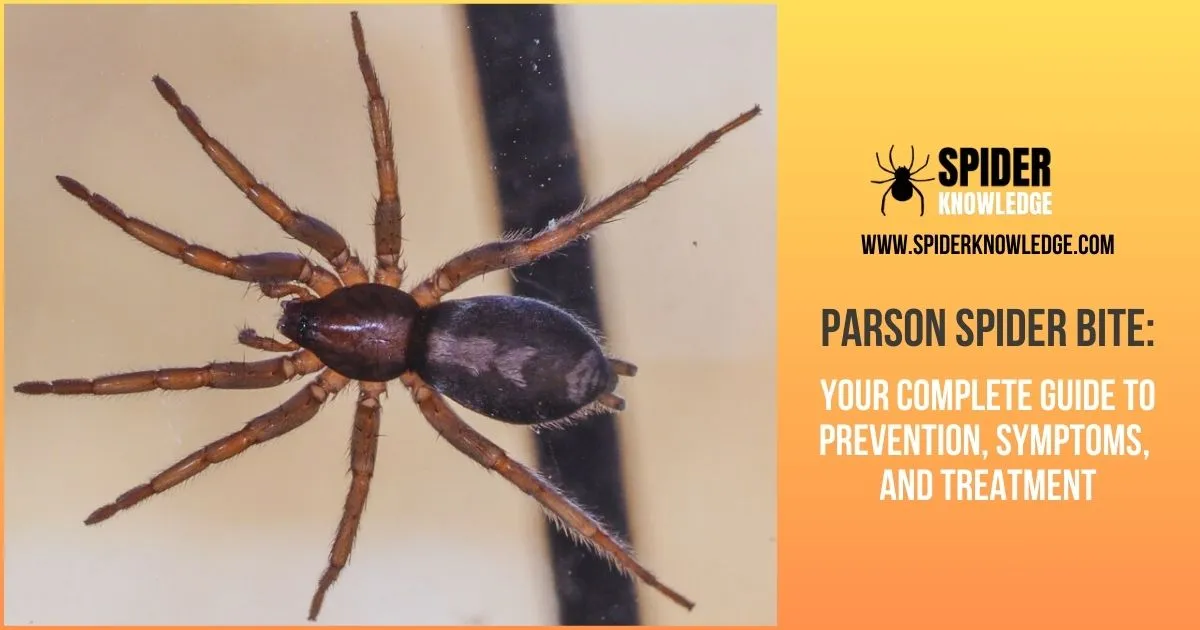Imagine, you’re going through your closet and reach for a cozy sweater you haven’t worn in a while. Suddenly, you feel a sharp pinch on your hand. As you pull back, you spot a small, dark spider quickly running away. Could it be a parson spider bite? And more importantly, what should you do next?
In this detailed guide, we’ll take a close look at parson spiders and their bites. We’ll cover everything from how to identify them and prevent bites to understanding the symptoms and treatments, so you’ll be ready for any spider encounters. Whether you’re afraid of spiders and want to face your fears or you’re just curious about nature, get ready for an informative journey into the world of parson spiders!
Table Of Contents
- Meet the Parson Spider: Identification and Habits
- Parson Spider Bites: What You Need to Know
- Parson Spider vs. Brown Recluse: Know the Difference
- What to Do If a Parson Spider Bites You: 7 Essential Steps
- Home Treatment for Parson Spider Bites
- Natural Remedies for Parson Spider Bites
- When to Seek Medical Attention
- Preventing Parson Spider Bites
- Fascinating Parson Spider Facts
- Conclusion

Meet the Parson Spider: Identification and Habits
Let’s start by getting to know our arachnid friend. The parson spider (Herpyllus ecclesiasticus) is a member of the ground spider family, Gnaphosidae. Here’s what you need to know:
| APPEARANCE | BEHAVIOR | HABITAT |
|---|---|---|
| 1) Size: Adult parson spiders typically measure 1/2 to 3/4 inch in length. 2) Color: They’re dark brown or black with a distinctive white or gray stripe down the center of their abdomen. resembling the cravat worn by parsons in the 18th century, which gives the spider its name. 3) Shape: They have a somewhat flattened body shape, perfect for squeezing into tight spaces. The front part (cephalothorax) is broad and slightly rounded. The abdomen is oval-shaped and tapers towards the rear. Long and slender legs that are well-adapted for quick movement. | 1) Nocturnal hunters: Parson spiders are most active at night, hunting for prey rather than building webs. 2) Speed demons: These spiders are known for their quick, erratic movements. 3) Shelter seekers: Parson spiders often wander indoors, especially during colder months, in search of shelter and food. They are commonly found in homes, garages, and basements. 4) Resting During the Day: During the day, Parson spiders typically rest in a silken retreat, which they may construct in hidden places like under stones or within cracks. | 1) Residential Areas: Frequently found indoors in homes, garages, and basements, where they seek shelter and hunt for insects. 2) Gardens and Yards: Commonly found outdoors in gardens, under rocks, leaf litter, and logs, where they can hide during the day and hunt at night. 3) Woodlands and Forest Edges: In natural settings, they inhabit woodlands, particularly around forest edges, where they can find abundant cover and prey. 4) Under Debris: They often reside under natural debris such as stones, bark, or fallen branches, where they create silken retreats for resting. 5) Geographic range: They’re native to North America and are widespread across the continent. |
Parson Spider Bites: What You Need to Know
While parson spiders aren’t aggressive and typically avoid human contact, bites can occur when they feel threatened or are accidentally pressed against the skin. Here’s what you should know about parson spider bites:
| BITE CHARACTERISTICS | SYMPTOMS | SEVERITY |
|---|---|---|
| 1) Initial sensation: Most people describe the bite as feeling like a sharp pinprick. 2) Pain level: The pain is usually moderate and localized to the bite area. 3) Appearance: The bite site may become red, swollen, and slightly itchy. | 1) Immediate effects: Pain, redness, and swelling at the bite site. 2) Potential reactions: Some individuals may experience: Itching or burning sensation, mild to moderate pain lasting several hours and in rare cases, nausea or headaches. | 1) Generally mild: Most parson spider bites are not serious and resolve on their own within 24-48 hours. 2) Rare complications: In some cases, individuals may experience more severe reactions or develop secondary infections. |
It’s important to note that while parson spider bites can be uncomfortable, they are not considered medically dangerous for most people.
Parson Spider vs. Brown Recluse: Know the Difference
| APPEARANCE | SIZE | BITE SYMPTOMS | GEOGRAPHIC RANGE |
|---|---|---|---|
| 1) Parson Spider: Dark brown or black with a white or gray stripe on the abdomen. 2) Brown Recluse: Light to medium brown with a distinctive violin-shaped mark on the cephalothorax. | 1) Parson Spider: 1/2 to 3/4 inch in length. 2) Brown Recluse: 1/4 to 1/2 inch in length. | 1) Parson Spider: Localized pain, redness, and swelling; rarely causes systemic symptoms. 2) Brown Recluse: Can cause severe pain, tissue necrosis, and systemic symptoms in some cases. | 1) Parson Spider: Found throughout North America. 2) Brown Recluse: Primarily found in the south-central and midwestern United States. |
Key Difference: Unlike brown recluse bites, parson spider bites do not cause tissue necrosis or severe systemic reactions.
Do brown recluse spider play dead? Read here.

What to Do If a Parson Spider Bites You: 7 Essential Steps
If you suspect you’ve been bitten by a parson spider, follow these steps:
- Stay Calm: Panic can increase heart rate and potentially spread venom faster.
- Identify the Spider: If possible, safely capture or photograph the spider for identification. This can help with treatment decisions.
- Clean the Bite Area: Wash the affected area thoroughly with soap and water to prevent infection.
- Apply a Cold Compress: Use an ice pack or cold, damp cloth on the bite area to reduce swelling and numb pain. Apply for 10 minutes at a time.
- Take Over-the-Counter Pain Relievers: If needed, take acetaminophen or ibuprofen to manage pain and reduce inflammation.
- Monitor Your Symptoms: Keep an eye out for any signs of allergic reaction or infection, such as: • Spreading redness or warmth around the bite • Fever or chills • Nausea or vomiting • Difficulty breathing • Severe pain or swelling
- Seek Medical Attention if Necessary: While most parson spider bites don’t require medical intervention, consult a healthcare provider if you experience severe symptoms or have concerns.
Home Treatment for Parson Spider Bites
For most parson spider bites, home treatment is sufficient. Here are some effective methods to manage symptoms:
- Cold Therapy: Continue applying cold compresses to reduce swelling and numb pain.
- Elevation: If the bite is on a limb, elevate it to reduce swelling.
- Antihistamines: Over-the-counter antihistamines like diphenhydramine (Benadryl) can help reduce itching and mild allergic reactions.
- Hydrocortisone Cream: Apply a thin layer of 1% hydrocortisone cream to the bite area to reduce inflammation and itching.
- Clean Bandage: Keep the bite area clean and covered with a sterile bandage to prevent infection.
- Rest: Allow your body time to heal by getting plenty of rest and avoiding strenuous activities.
- Hydration: Drink plenty of water to help your body flush out any toxins.
Natural Remedies for Parson Spider Bites
For those preferring natural alternatives, consider these remedies:
- Aloe Vera: Apply fresh aloe vera gel to soothe the skin and reduce inflammation.
- Baking Soda Paste: Mix baking soda with a small amount of water to create a paste. Apply to the bite area to neutralize venom and reduce itching.
- Tea Tree Oil: Dilute tea tree oil with a carrier oil and apply to the bite. It has natural antiseptic and anti-inflammatory properties.
- Witch Hazel: Apply witch hazel to the bite area to reduce swelling and soothe the skin.
- Plantain Leaves: Crush fresh plantain leaves and apply as a poultice to draw out venom and reduce inflammation.
- Lavender Essential Oil: Dilute lavender oil and apply to the bite area for its calming and anti-inflammatory effects.
- Echinacea: Take echinacea supplements or apply echinacea cream to boost your immune system and fight potential infections.
Remember, while these natural remedies can be helpful, they should not replace medical treatment if symptoms are severe or persistent.
When to Seek Medical Attention
While most parson spider bites can be treated at home, certain situations warrant medical attention:
- Signs of Infection: Increasing redness, warmth, or pus around the bite area.
- Allergic Reactions: Difficulty breathing, widespread rash, or swelling of the face or throat.
- Severe Pain: Pain that is intense or spreads beyond the bite area.
- Systemic Symptoms: Fever, chills, nausea, or vomiting.
- Uncertain Spider Identification: If you’re unsure whether it was a parson spider or a more dangerous species.
- Pre-existing Conditions: If you have a weakened immune system or other health concerns that may complicate healing.
When in doubt, it’s always better to consult a healthcare professional for proper evaluation and treatment.
Preventing Parson Spider Bites
An ounce of prevention is worth a pound of cure, especially when it comes to spider bites. Here are some strategies to reduce your risk of parson spider encounters:
- Seal Entry Points: Inspect your home’s exterior and seal any cracks or gaps where spiders might enter.
- Declutter: Reduce hiding spots for spiders by keeping your home tidy and clutter-free.
- Use Protective Gear: Wear gloves when working in areas where spiders might be present, such as gardens, attics, or storage areas.
- Shake Out Clothing and Shoes: Before putting on clothes or shoes that have been stored or left undisturbed, give them a good shake to dislodge any hiding spiders.
- Keep Beds Away from Walls: Position your bed slightly away from walls to reduce the chance of spiders crawling onto your bed.
- Use Natural Repellents: Consider using natural spider deterrents like peppermint oil, vinegar, or citrus peels around your home.
- Maintain Your Yard: Keep grass short and remove piles of leaves, wood, or debris where spiders might hide.
- Use Sticky Traps: Place sticky traps in corners and along baseboards to catch spiders before they become a problem.
- Educate Yourself: Learn to identify common spiders in your area to better understand which ones pose risks.
- Professional Pest Control: If you have a persistent spider problem, consider hiring a professional pest control service for safe and effective management.

Fascinating Parson Spider Facts
Let’s wrap up with some interesting tidbits about these misunderstood arachnids:
- Beneficial Predators: Parson spiders help control pest populations in gardens and homes by feeding on insects like flies, moths, and cockroaches.
- Silk Users: While they don’t build webs to catch prey, parson spiders use silk to create egg sacs and temporary retreats.
- Winter Survival: In colder climates, adult parson spiders often overwinter in homes or other protected areas.
- Maternal Care: Female parson spiders guard their egg sacs until the spiderlings hatch.
- Night Vision: Like many nocturnal hunters, parson spiders have excellent night vision to help them locate prey in the dark.
- Speedy Sprinters: Parson spiders are known for their quick bursts of speed, which help them catch prey and evade predators.
- Longevity: In the wild, parson spiders typically live for about one year, but some may survive for two years or more.
Conclusion
While the thought of a parson spider bite might be scary, with the knowledge from this guide, you’re now ready to handle any spider encounter. Remember, these interesting creatures are more helpful than harmful and play an important role in our ecosystem.
By understanding parson spider behavior, learning how to identify and treat bites, and using prevention strategies, you can live peacefully with these arachnid neighbors. Who knows? You might even start to appreciate these misunderstood spiders.
So, the next time you see a parson spider on your floor, take a moment to notice its unique beauty and its role in nature. Just be sure to admire it from a safe distance – for both your safety and the spider’s!
Stay curious, stay informed, and happy (and safe) spider spotting!
